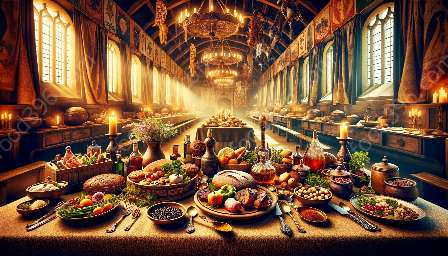Medieval cuisine offers a rich tapestry of flavors, ingredients, and culinary techniques that reflect the history and culture of the time. From basic staples to sumptuous feasts, learn about the common foods and dishes that defined this fascinating period in culinary history.
The Historical Context of Medieval Cuisine
Medieval cuisine encompasses the food traditions of Europe during the Middle Ages, spanning roughly from the 5th to the 15th century. This period in history was characterized by distinct social hierarchies, with the nobility enjoying elaborate banquets and the common people relying on simpler fare.
Common Foods in Medieval Cuisine
The diet of the medieval era was largely shaped by the availability of local ingredients and agricultural practices. Common foods included:
- Bread: A staple of medieval diets, bread was usually made from coarsely ground grains such as barley, rye, or oats.
- Ale: As water was often unsafe to drink, ale was consumed throughout the day by people of all social classes, providing essential hydration and nutrients.
- Porridge: A simple but nourishing dish made from boiled grains, such as oats or barley, and often flavored with honey or herbs.
- Cheese: Produced in monasteries and peasant households, cheese was a valuable source of protein and fat.
- Root Vegetables: Carrots, turnips, and parsnips were commonly grown and used in soups, stews, and as accompaniments to meat dishes.
Significant Dishes in Medieval Cuisine
Medieval cooks employed a range of techniques to create flavorful and aromatic dishes, resulting in a number of iconic recipes that are still celebrated today:
- Roast Meat: A symbol of wealth and feasting, roasted meats, especially pork and mutton, were seasoned with spices and herbs before being cooked over an open fire.
- Pies and Pastries: Pastry-making was a popular art form, with savory pies filled with meats, fruits, and spices gracing the tables of both peasants and nobles.
- Spiced Wines: Mulled and spiced wines were enjoyed during festive occasions and were flavored with an array of exotic spices like cinnamon, cloves, and ginger.
- Honey-Sweetened Confections: The use of honey as a sweetener resulted in the creation of various confections, such as marzipan, spiced nuts, and fruit preserves.
- Fish Dishes: Freshwater and saltwater fish were abundant and often prepared using techniques such as curing, smoking, or poaching.
The Influence of Medieval Cuisine on Culinary History
Medieval cuisine laid the foundation for many culinary traditions that continue to thrive today. The use of local and seasonal ingredients, preservation methods, and the blending of diverse flavors and textures are all hallmarks of medieval gastronomy that have left an indelible mark on modern food culture.
Exploring the Legacy of Medieval Cuisine
The culinary legacy of the Middle Ages offers a fascinating glimpse into the tastes and traditions that shaped an entire era. By understanding the common foods and dishes of medieval cuisine, we gain a deeper appreciation for the enduring impact of this rich culinary heritage.

